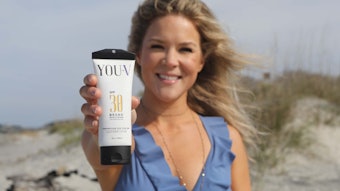
Sensory Expertise as a Guide in Texture Development
Skin care and beauty products stimulate all the senses, that’s why Gattefossé have always been attaching great importance to the sensorial evaluation of their products and formulas. They have been developing their expertise in sensory analysis since 1996. Since then, they have an in-house expert panel that analyzes their ingredients, formulas and market products.
In addition to sensory analysis, data treatment enables the application of sensory data in a broader context. With the statistical treatment called PCA (Principal Component Analysis), it is possible to identify distinct sensory trends and patterns, characterize product segments, benchmark products and better understand consumer preferences. Texture and sensoriality are the major criteria involved in the purchase decision, and even more in re-purchasing as they make a connection between a product and the consumer.
What are the sensory characteristics of sensitive skincare?
The expertise in sensory analysis cultivated at Gattefossé has not only enhanced their understanding of product appeal but also found its application in addressing global concerns, such as skin sensitivity. According to a 2020 study, an astounding 71% of the global adult population has reported experiencing sensitive skin syndrome. To analyze sensory trends specific to sensitive skin products, Gattefossé’s technical marketing experts around the globe gathered more than 20 bestsellers from the sensitive skin category across diverse regions, including Latin America, the U.S., China, Korea, France and Japan. Those products have been analyzed by their sensory panel and data analysis has been conducted.
What was observed? First, most of the products analyzed have a richer, thicker and tackier texture compared to regular skin care products for all skin types. This is linked to the fact that dry skin often present sensitivity. But this is known that all types of skin can be sensitive, and that’s what was noticed secondly: all types of texture can be found in the sensitive skin category to respond to all consumers’ needs; from the lightest serums to the richest balms.
The data found gives a guideline to sensitive skin range formulation development, but It is possible to go deeper in the statistical analysis and find matching sensory profiles with a benchmark. This method makes it possible to find formulation starting points, and that’s what Gattefossé’s experts did thanks to their sensory database including more than 380 formulas.
Gattefossé’s solution to sensitive skin ranges
At in-cosmetics global 2023, Gattefossé launched a new 100% natural origin O/W emulsifier designed for sensitive skin: Emulium® Dermolea MB.
This ingredient is composed of plant lipids close to those of the skin’s surface, rich in anti-inflammatory pentacyclic triterpenes and sterols. It has been highly substantiated to prove that it is not only an emulsifier, but it is also a real active functional ingredient that soothes sensitive skin, protects against pollution, moisturizes and reinforces the barrier function.
In formulation, Emulium® Dermolea MB is easy to formulate and multifunctional, as it can be used in many applications, from sprays to thick butters, with up to 40% of oil phase. This emulsifier has a strong sensory signature through the light moisturizing film it creates on the skin, so addictive and comforting!
Given the results of the texture analysis conducted, it's clear that Emulium® Dermolea MB is particularly well-suited to sensitive skin ranges, in terms of both texture and efficacy.

Disclaimer:
The above paid-for content was produced by and posted on behalf of the Sponsor. Content provided is generated solely by the Sponsor or its affiliates, and it is the Sponsor’s responsibility for the accuracy, completeness and validity of all information included. MedEsthetics takes steps to ensure that you will not confuse sponsored content with content produced by MedEsthetics and governed by its editorial policy.











